COMPUTER DANCE
The research Analivia carried out from 1973 to 1976 pioneered videoart in Brazil and computer dance in the world. The computer processes the information using a Fortran IV language program. The output is instructions to coordinate the performance of the dancers and the video team to make the vídeo.
The relationship interpretation/programming presupposes both pre-determined and undetermined elements, stimulating the creativity of the dancers. We are not concerned with making an animation using real people. This research deals with the binomial freedom/ planning that is present till now in our society.
M3X3
Considered the first work of Brazilian video art, remembering that there was no VHS video-recorder in Brazil at that time. Dancers were organized in a 3×3 matrix, the image were high-contrast merging scene and dancers, and movements were mechanical, resulting in a criticism to the computerized society.
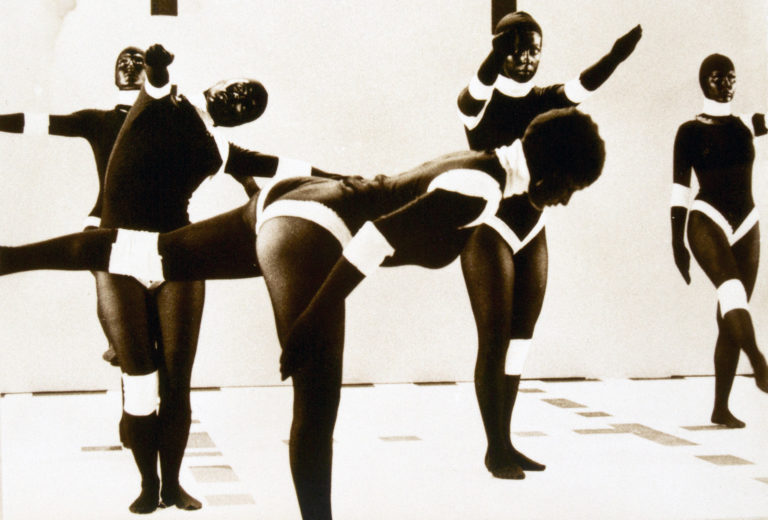
Photo from the set during the video recording
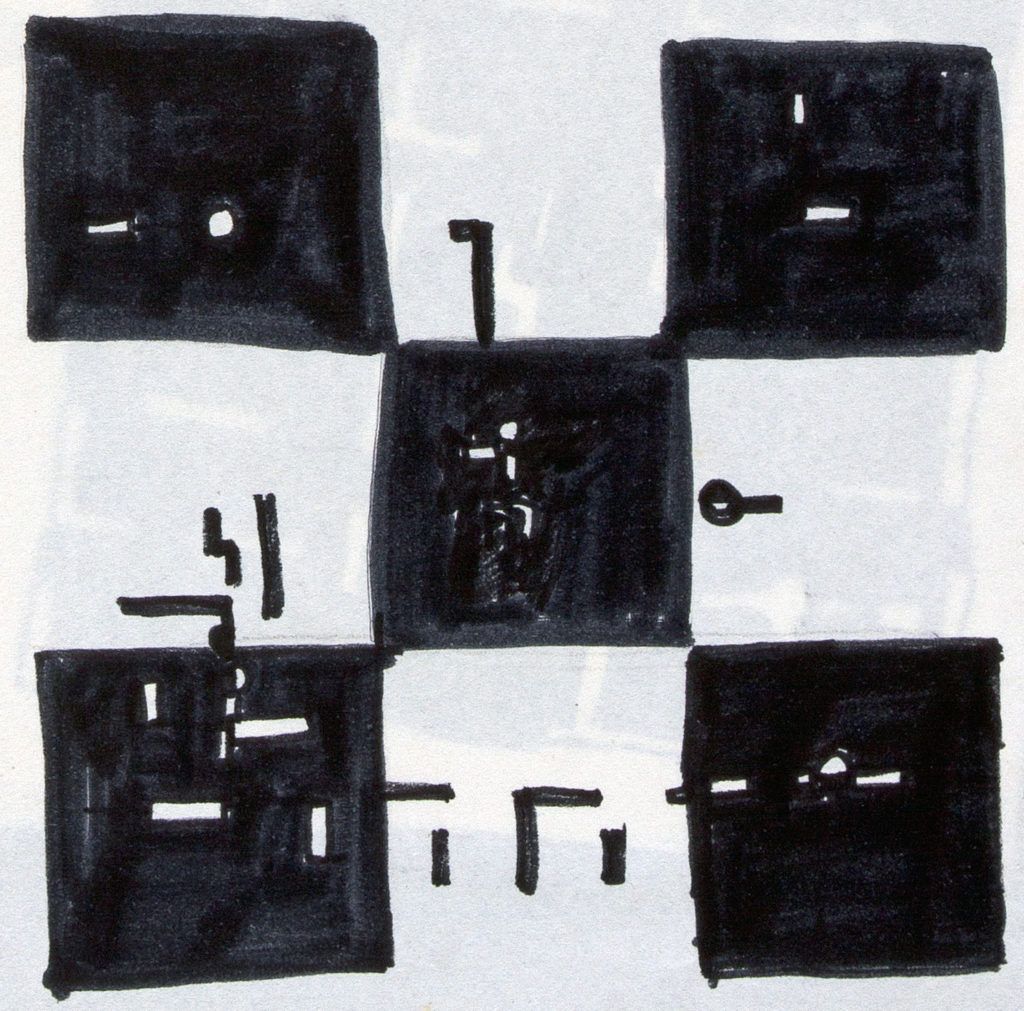
Sketches of scene possibilities
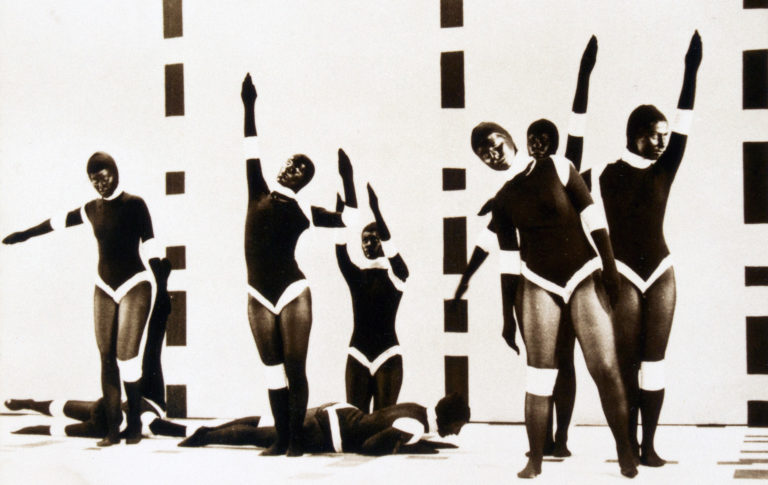
Photo from the set during the video recording
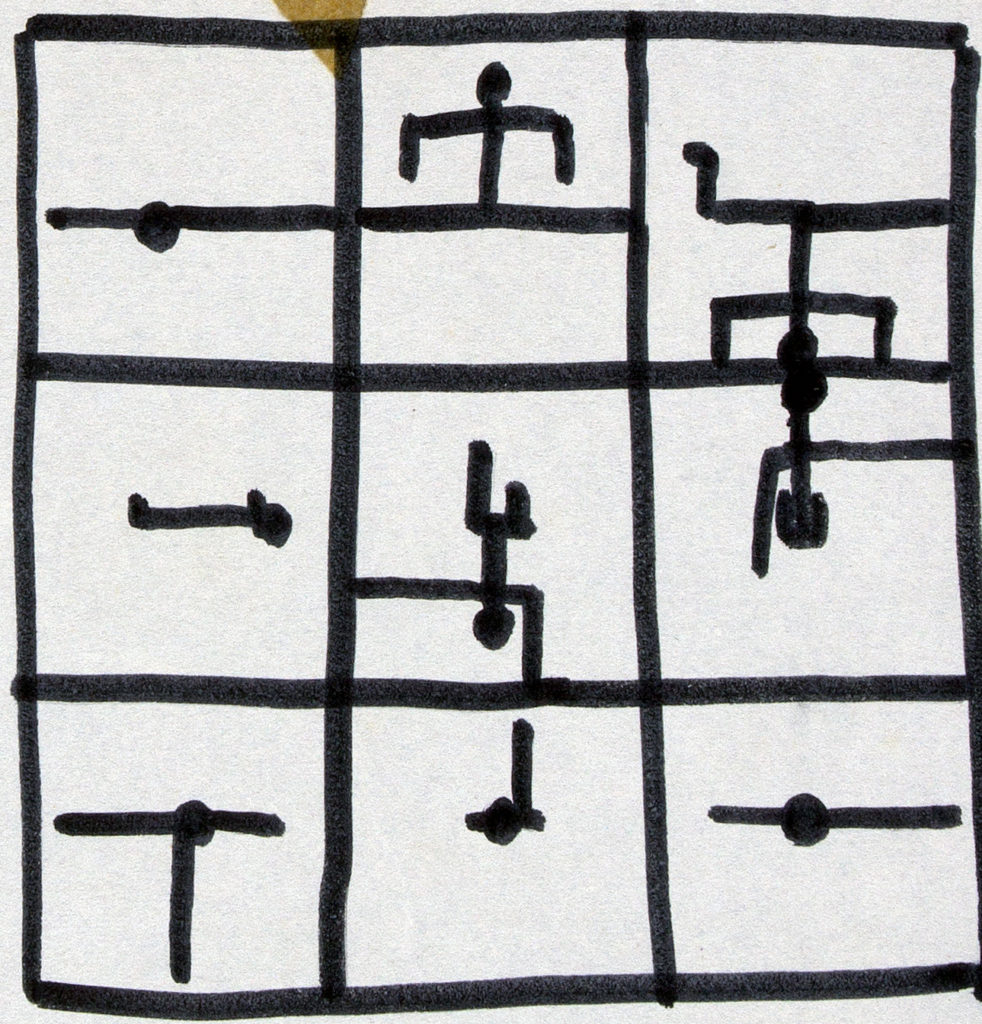
Sketches of scene possibilities
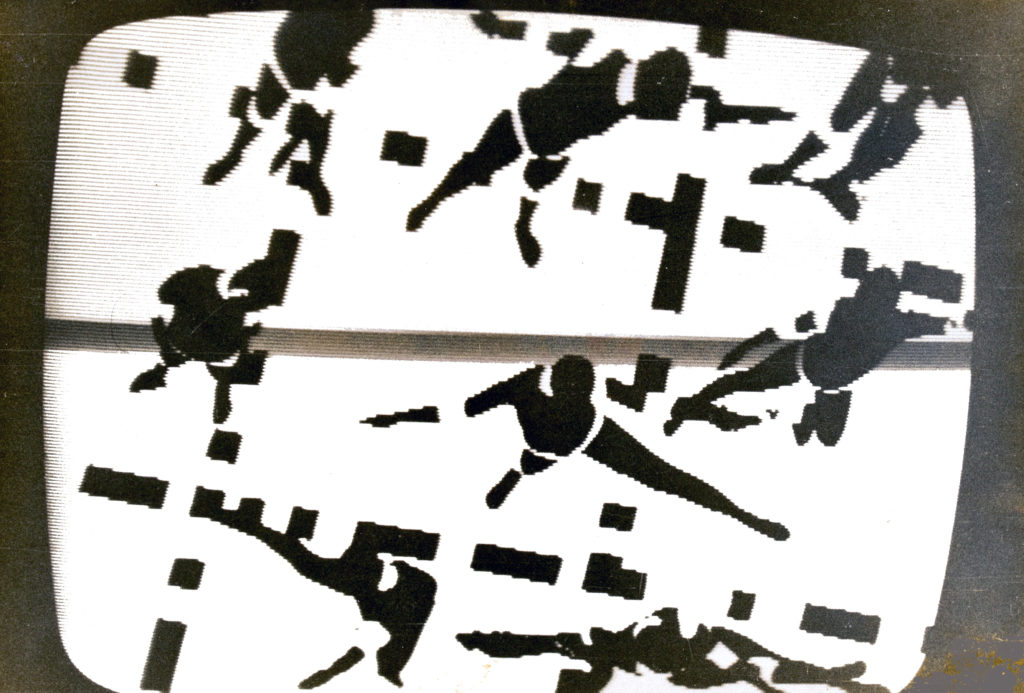
Image of the TV from the 70’s
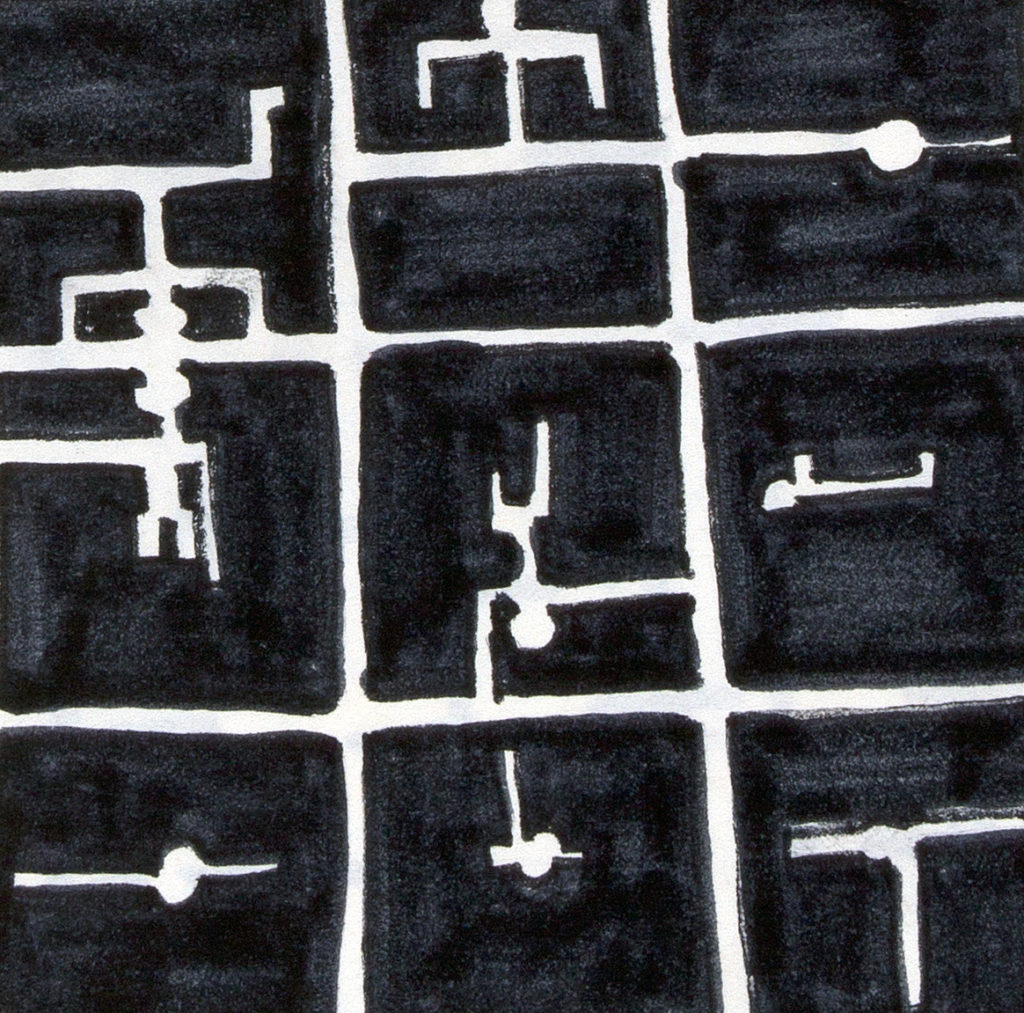
Sketches of scene possibilities
0=45º
A solo dance created for a front vídeo câmera. The same dance positions computer output generated three versions.
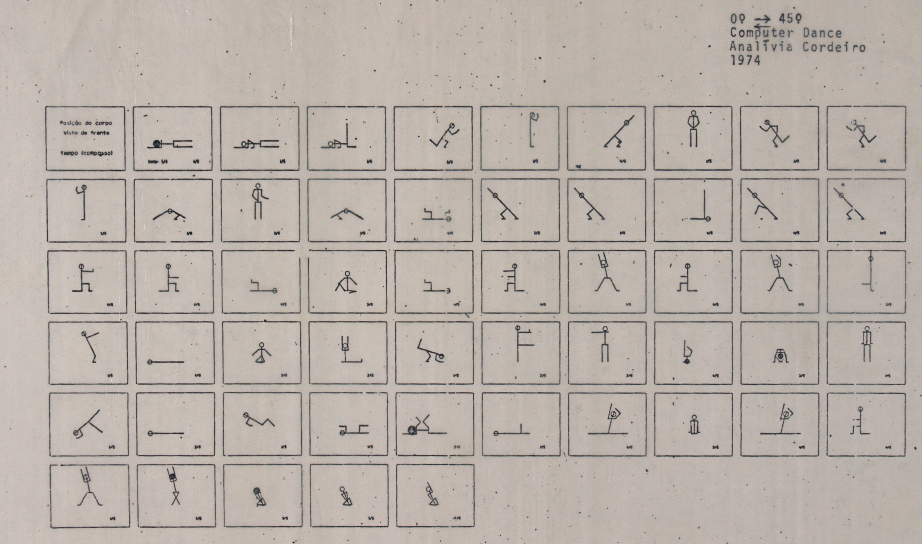
Computer dance notation for the three versions of 0=45
0=45 VERSÃO I – The scene and costume are based in the concrete art language.
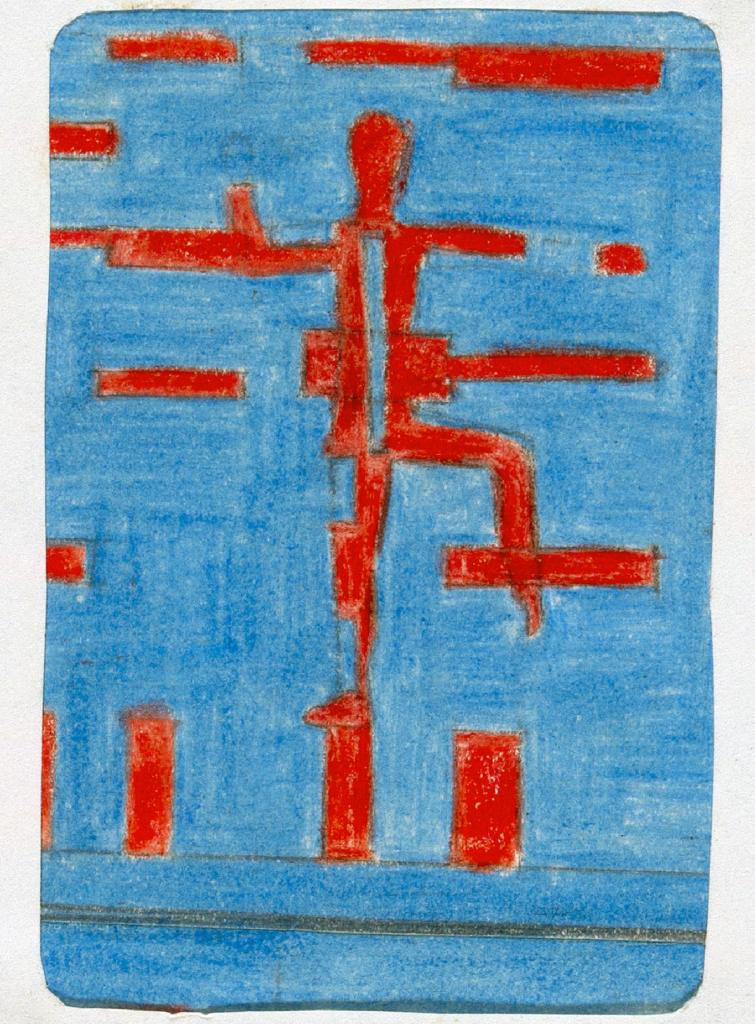
Sketches of scene possibilities
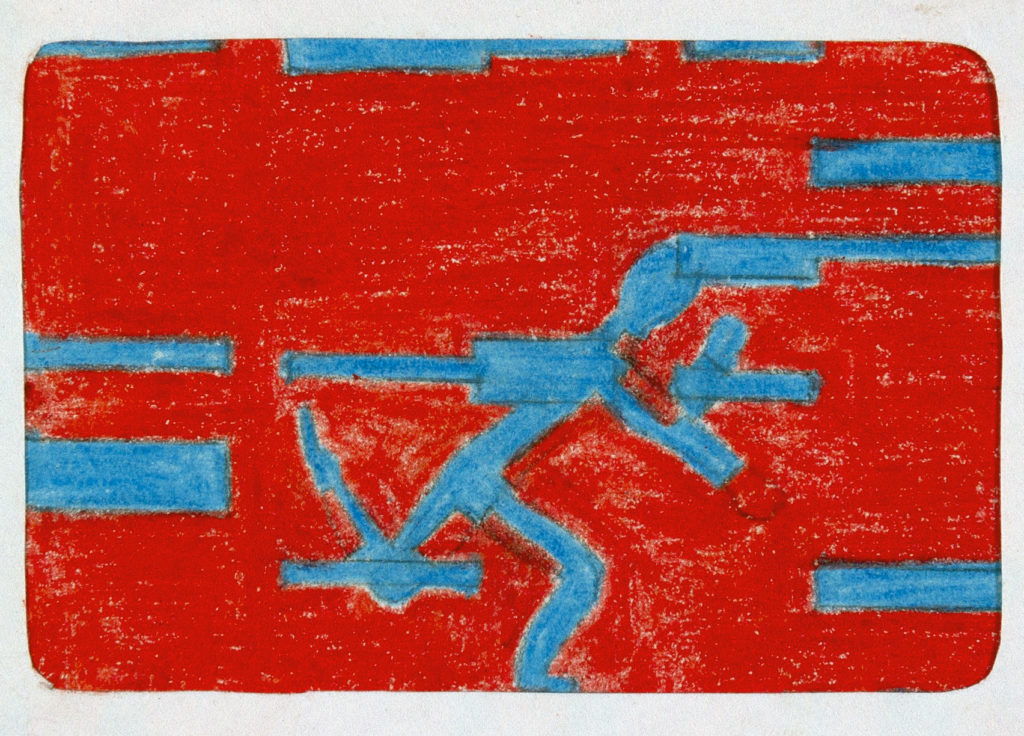
Sketches of scene possibilities

Sketches of scene possibilities
0=45 VERSÃO V – A REMAKE OF VERSION II – A historical computer video dance from 1974, a remake of 0=45 version II.
A solo where the dancer merges with the scenario while performing rounded or diagonal movements. The scenario is made up of diamonds and black rectangles and a sequence picked at random by the computer. The dimension of these forms are similar to the dancer’s body measures. This way the dancer and the scene are one.
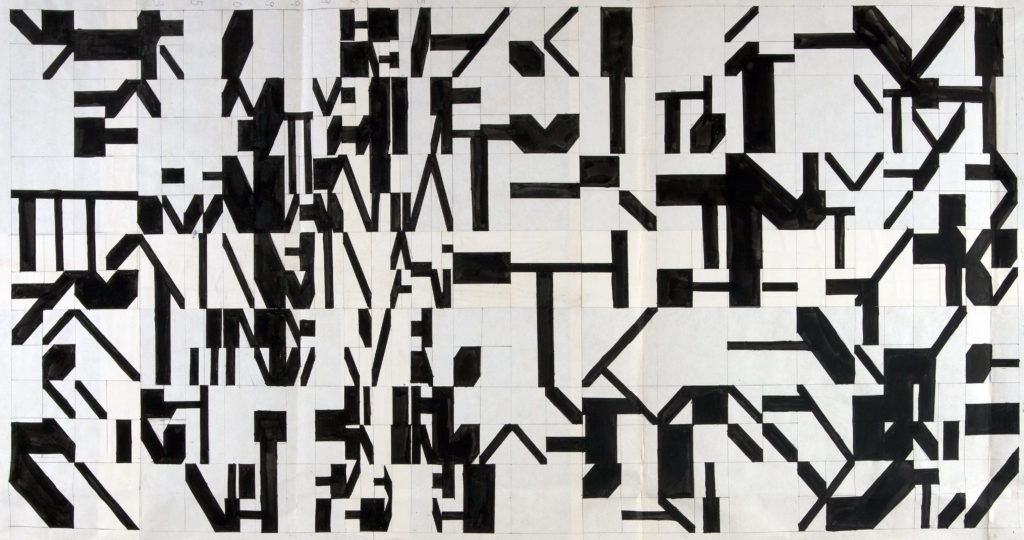
Scene drawing note that the geometric elements were chosen at random by the computer program
0=45 VERSÃO III – 0°‹—›45° is an historical work of computer dance, one of the precursors of video clip. The movement of the whole body is seen as computer static notation. The body images appear only in closeups, and the image of the whole body is composed only in the mind of the viewer. Thus, the movement of the whole body is the sum of the details of the body that are linked in the spectator’s mind, and never in the video image. This work is a study of the degrees of visual intelligibility of movement and a portrait of our fragmented corporal image, consequence of the hectic lifestyle and stress of modern society. Thus, as only the movement notation shows the body position, the brain of the viewer makes up the dance performed by the dancer. An experiment about our perception of space-time.
0=45 VERSÃO VI – A 0=45 computer video dance from 1974 interpreted by the street dancer Mia Omori, 2024.
0=45 VERSÃO VII – A 0=45 computer video dance (1974) interpreted simultaneously by Analivia Cordeiro and Mia Omori, 2024.
GESTOS
GESTURES – The positions of the dancers’ body were taken randomly from newspapers and magazines pictures, questioning the drama while showing that our daily life can be seen as pieces of a puzzle.
CAMBIANTES
CAMBIANTES – A computer dance composed by movements based on 45 degrees and right angles made by the body limbs positions during the choreography. The black and white scene is a unit obtained through the visual union between the dancers’ costumes and the scene. The scene is composed by drawing body parts in black on a white background. The dance is like a moving scene made with the dancers’ bodies in black and white. Together with drawings of body parts, black triangles are placed on the edges of the scene. Using high contrast black and white images, the rectangular space of the video screen is cut merging into other forms. So, when the video is displayed in a dark video monitor or in a dark room, the screen image becomes an irregular polygon. This visual result conceals the rectangular bi-dimensional space of the video projection with the black triangles that penetrate in the dark room space, remembering that video projection rooms were like the movie theatres in the beginning of video-art.

Photo of dancers at dressing room. Photo by Pedro Farkas
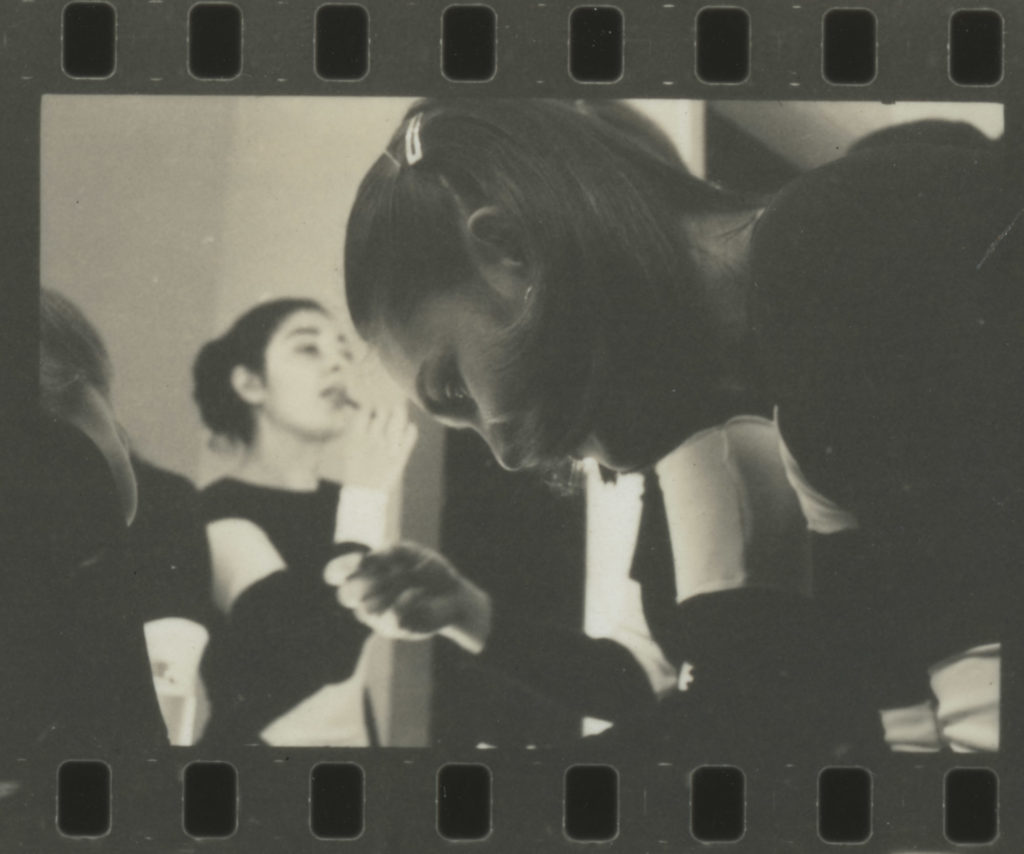
Photo of dancers at dressing room. Photo by Pedro Farkas
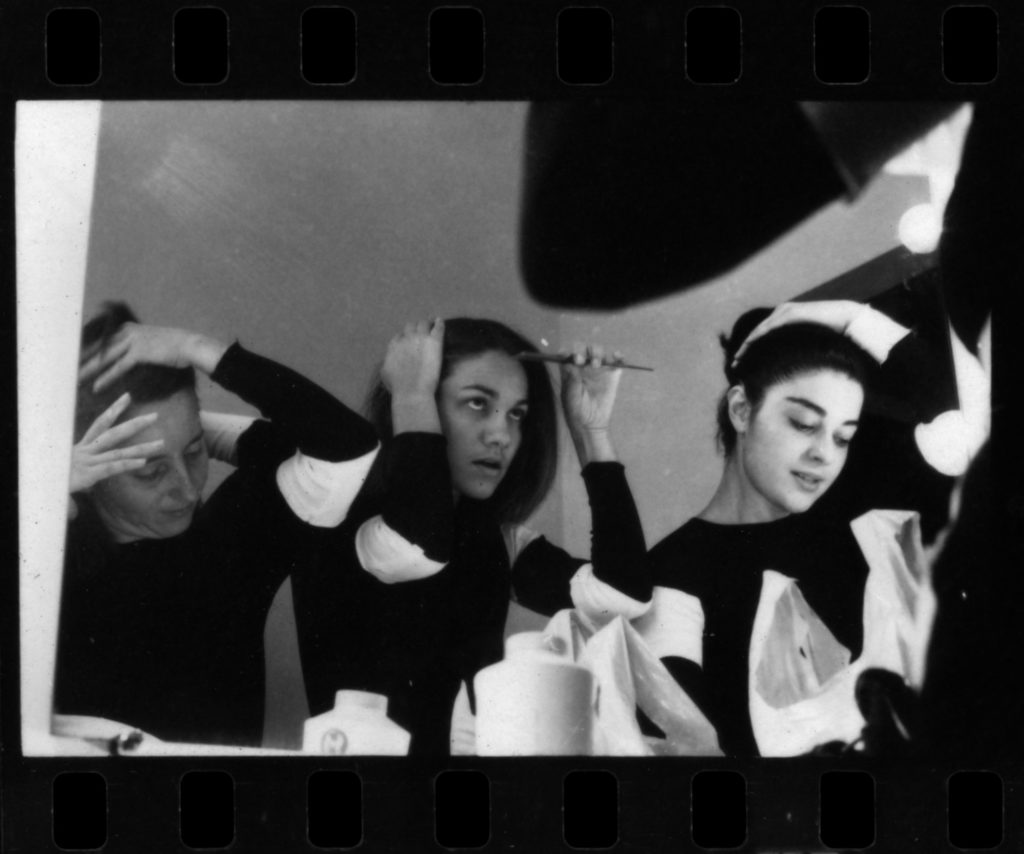
Photo of dancers at dressing room. Photo by Pedro Farkas
A new version from 2015
Cambiantes installation at 11.Bienal Mercosul 2015
.
.
